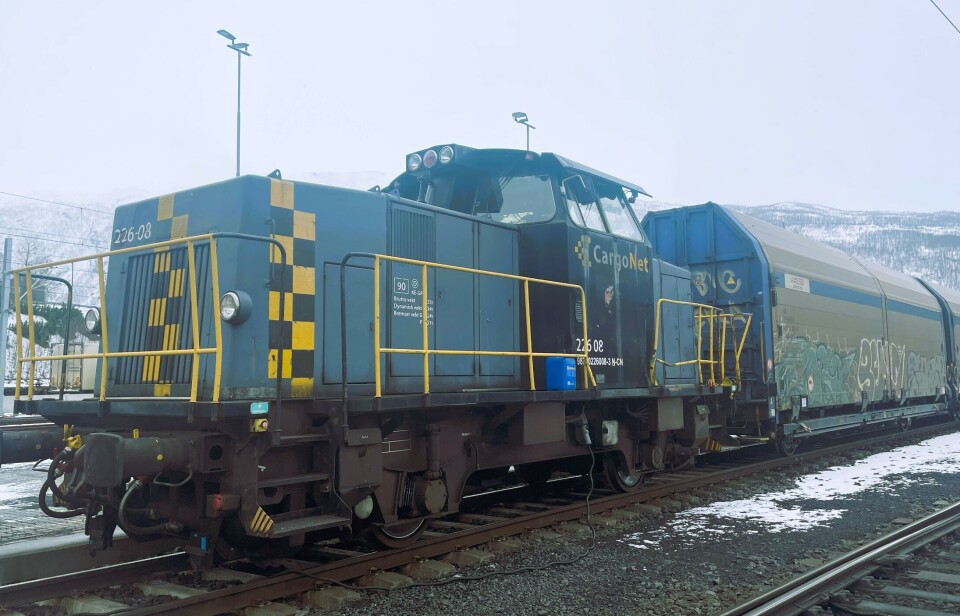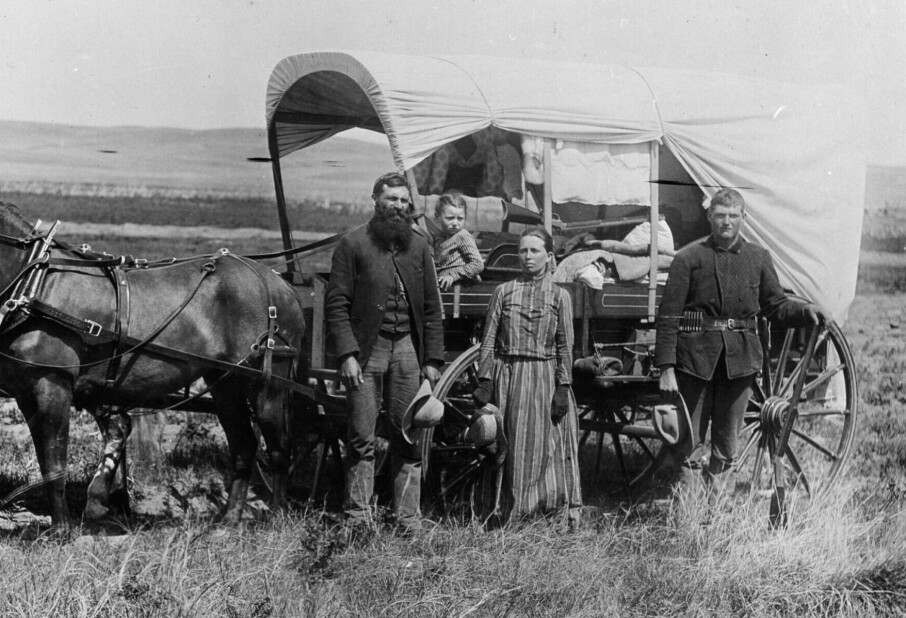THIS CONTENT IS BROUGHT TO YOU BY SINTEF - read more
Locomotives that run on diesel can be electrified
This would both cut CO2 emissions and significantly reduce overall energy consumption, according to a new study.

The trains that run on the Ofoten Line use electric locomotives. However, there are no overhead electrical lines in the terminal area.
This is because they would get in the way of the equipment that lifts cargo and containers onto and off the train wagons.
That's why the diesel-powered shunting locomotive is used at there instead. These locomotives move the train wagons from one track to another.
Researchers at SINTEF have now studied the effect of electrifying a shunter locomotive at Norway’s Fagernes terminal. This is the main terminal on the Ofoten-Lofoten-Vesterålen train line for incoming consumables and outgoing fish products.
Running the locomotives on batteries would – in addition to the environmental benefits – eliminate the need to change locomotives at the terminal. This also avoids the problems overhead lines can cause.
Theoretical electrification
In the study, the researchers carried out a theoretical electrification of a diesel-hydraulic shunting locomotive.
“The changeover to electric involves removing the diesel engine, fuel tank, and hydraulic switch. This will be replaced with a battery, or possibly a fuel cell and battery, as well as one or two electric motors with associated control equipment,” says Roar Andreassen.
He is a senior research scientist at SINTEF.
The study was conducted in two parts. First, the researchers made a theoretical calculation in which a 300-tonne train (including the locomotive) accelerates before braking over a distance of a few hundred metres. This simulates a typical switching operation where wagons are moved from one track to another.
The calculations show that the train would use 1.6 kWh of energy until it begins braking. In an electric drive locomotive, part of the kinetic energy can be harvested by regeneration. With 80 per cent energy regeneration, the train would only use 0.4 kWh until it came to a stop.
“An electrified locomotive with regeneration would therefore only use 25 per cent as much energy as a diesel locomotive for this kind of operation,” says Andreassen.
GPS logger followed the locomotive
The second part of the study was carried out by tracking the locomotive with a GPS logger throughout an entire work shift. This happens at night. Wagons are emptied and reloaded. New trains are also set up for departure the next morning.
The GPS data was analysed based on the locomotive movements to document speeds and distances. For each individual movement, the weight of the train was calculated based on the acceleration achieved.
The diesel locomotive must have its engine running throughout the shift for the sake of the brakes and control system. In the experiment, it was in operation for about six hours. The actual movement work, either alone or with wagons, lasted about one hour. The total energy use was calculated to be about 28 kWh.
Of this, 11 kWh could have been harvested if the locomotive had been electrified with energy regeneration. The total diesel consumption was 21 litres of diesel. This results in CO2 emissions of 56.3 kilograms.
“Electrification would both eliminate this CO2 emission and provide significantly lower energy consumption,” says Andreassen.
On cold days, however, the waste heat from the diesel engine that heats the driver’s cab must be replaced by a heat pump, like in electric cars. The energy consumption would still be low compared to diesel operation.
Existing locomotives can be reused
If everyone in the world used as many resources as Europe, we would need 2.8 Earths to meet consumer demand, according to the UN. Facilitating the reuse of materials will both save nature and reduce waste and emissions in the production and transport of materials.
Shunter locomotives are robust machines that have already been rebuilt several times with engine replacements and new control systems.
“The study findings give reason to assume that they can also be electrified, and thus made more climate-friendly – not least because we can reuse the existing locomotives,” says Andreassen.
Reference:
Andreassen et al. Transport and logistics in the Aurora region. Status and overview. Introducing autonomous and sustainable work modes, SINTEF Report, 2025.
———
Read the Norwegian version of this article on forskning.no
More content from SINTEF:
-
Testing a giant ship: May take five kilometres to stop
-
A robot is helping researchers hunt for the best cancer warriors
-
Where kelp is being turned into lab-grown meat
-
Immediate action is a key factor for successful restoration of marine habitats
-
Dynamic cables – the umbilical cord of ocean installations
-
School buildings affect students and teachers





































